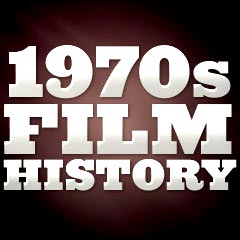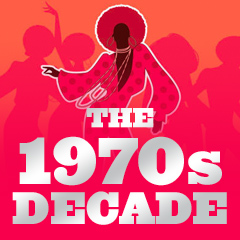|
Literary-Based Films:
 As
in all decades, films were developed from best-selling novels and
literature: Papillon (1973) was adapted from Henri "Papillon
(butterfly)" Charriere's book - an autobiographical account with
Steve McQueen (with a butterfly tattooed on his chest as Henri 'Papillon'
(butterfly) Charriere) and Dustin Hoffman (as swindler-counterfeiter
Louis Dega) - fellow prisoners in the infamous penal colony in French
Guiana. Also, the third film version of F. Scott Fitzgerald's
The Great Gatsby (1974) was the third film of Robert Redford on
the top-ten list for the year. Ken Kesey's 1962 counter-cultural novel
One Flew Over the Cuckoo's Nest (1975)
was the basis for Milos Forman's acclaimed film about mental hospital
inmates (filmed in the Oregon State Mental Institution) and a repressive
Nurse - it was the first film since It
Happened One Night (1934) to sweep the top five Academy Awards,
giving four-time losing nominee Jack Nicholson his first Oscar win. As
in all decades, films were developed from best-selling novels and
literature: Papillon (1973) was adapted from Henri "Papillon
(butterfly)" Charriere's book - an autobiographical account with
Steve McQueen (with a butterfly tattooed on his chest as Henri 'Papillon'
(butterfly) Charriere) and Dustin Hoffman (as swindler-counterfeiter
Louis Dega) - fellow prisoners in the infamous penal colony in French
Guiana. Also, the third film version of F. Scott Fitzgerald's
The Great Gatsby (1974) was the third film of Robert Redford on
the top-ten list for the year. Ken Kesey's 1962 counter-cultural novel
One Flew Over the Cuckoo's Nest (1975)
was the basis for Milos Forman's acclaimed film about mental hospital
inmates (filmed in the Oregon State Mental Institution) and a repressive
Nurse - it was the first film since It
Happened One Night (1934) to sweep the top five Academy Awards,
giving four-time losing nominee Jack Nicholson his first Oscar win.
British and Australian Directors:
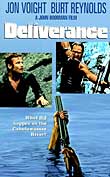 A
number of British directors, such as John Schlesinger, John Boorman, and
Peter Yates had migrated to Hollywood and were continuing to produce taut,
critically-successful films. Following his earlier success with Midnight
Cowboy (1969), one of Schlesinger's best films of the decade was
the adult drama Sunday, Bloody Sunday (1971) starring Glenda Jackson
and Peter Finch as lovers of the same man (Murray Head) in a complex romantic
triangle. He also directed The Day of the Locust (1975) - a dark
view of 1930s Hollywood, and the chase-thriller Marathon Man (1976)
with Laurence Olivier as a tooth-extracting Nazi. A
number of British directors, such as John Schlesinger, John Boorman, and
Peter Yates had migrated to Hollywood and were continuing to produce taut,
critically-successful films. Following his earlier success with Midnight
Cowboy (1969), one of Schlesinger's best films of the decade was
the adult drama Sunday, Bloody Sunday (1971) starring Glenda Jackson
and Peter Finch as lovers of the same man (Murray Head) in a complex romantic
triangle. He also directed The Day of the Locust (1975) - a dark
view of 1930s Hollywood, and the chase-thriller Marathon Man (1976)
with Laurence Olivier as a tooth-extracting Nazi.
English filmmaker John Boorman's Deliverance
(1972), a rites-of-passage drama adapted from James Dickey's novel,
was about a group of four civilized Atlanta businessmen (with Burt Reynolds
as a macho, cross-bow-wielding member of the group named Lewis) who canoed
into the Appalachian wilderness and found themselves threatened and assaulted
by backwoodsmen. (Its theme song "Dueling Banjos" became a huge hit, and
its tagline asked: "What Did Happen on the Cahulawassee River?")
 UK
director Nicolas Roeg directed some of his best films during this decade,
including co-directing Performance (1970) with Rolling Stones singer
Mick Jagger playing a pop star who lived with a sadistic gangster (James
Fox) in Swingin' 60s London. He also helmed the visually-stylized, semi-mystical
and beautiful adventure film Walkabout (1971) about the contrast
of aboriginal and modern culture in the Australian outback through a rites
of passage journey taken by a young teenaged girl (Jenny Agutter) and
an aboriginal boy. He then directed the brooding and psychological thriller
Don't Look Now (1973), a haunting tale of mystery and death set
in Venice and starring Julie Christie and Donald Sutherland as a grieving
couple. David Bowie starred in the title role in director Roeg's imaginative
The Man Who Fell to Earth (1976) as Thomas Jerome Newton ("Mr.
Sussex") - an alien in search of water who became a multi-millionaire
due to his advanced knowledge of engineering. UK
director Nicolas Roeg directed some of his best films during this decade,
including co-directing Performance (1970) with Rolling Stones singer
Mick Jagger playing a pop star who lived with a sadistic gangster (James
Fox) in Swingin' 60s London. He also helmed the visually-stylized, semi-mystical
and beautiful adventure film Walkabout (1971) about the contrast
of aboriginal and modern culture in the Australian outback through a rites
of passage journey taken by a young teenaged girl (Jenny Agutter) and
an aboriginal boy. He then directed the brooding and psychological thriller
Don't Look Now (1973), a haunting tale of mystery and death set
in Venice and starring Julie Christie and Donald Sutherland as a grieving
couple. David Bowie starred in the title role in director Roeg's imaginative
The Man Who Fell to Earth (1976) as Thomas Jerome Newton ("Mr.
Sussex") - an alien in search of water who became a multi-millionaire
due to his advanced knowledge of engineering.
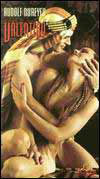 The
experimental, controversial and sensational Ken Russell directed a number
of films in the 1970s: The
experimental, controversial and sensational Ken Russell directed a number
of films in the 1970s:
- an adaptation of D.H. Lawrence's novel entitled Women
in Love (1970)
- The Music Lovers (1971) about the life of Russian
composer Tchaikovsky
- the shockingly excessive The Devils (1971) about
demonic possession, with Vanessa Redgrave and Oliver Reed
- The Boy Friend (1971) - a tribute to Busby Berkeley's
Hollywood musicals with Twiggy
- a hyper-wild visualization of Peter Townsend's rock
opera Tommy (1975) - Russell's first commercial hit
- the depiction of Franz Liszt as a sex-obsessed rock
star in Lisztomania
(1975)
- another screen biography - this time of a silent screen
idol Valentino (1977) with dancer Nureyev in his debut film role,
opposite Michelle Phillips
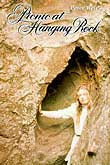 Highly-regarded
British director David Lean's only film of the decade was the overlong
Irish romantic melodrama Ryan's Daughter (1970). After his thrilling
Bullitt (1968), Peter Yates also directed Mother, Jugs and Speed
(1976), a black comedy about rival ambulance drivers named Mother
(Bill Cosby), Jugs (Raquel Welch), and Speed (Harvey Keitel). His best
film of the 70s was the insightful, bicycle-racing, coming-of-age youth
film Breaking Away (1979). Highly-regarded
British director David Lean's only film of the decade was the overlong
Irish romantic melodrama Ryan's Daughter (1970). After his thrilling
Bullitt (1968), Peter Yates also directed Mother, Jugs and Speed
(1976), a black comedy about rival ambulance drivers named Mother
(Bill Cosby), Jugs (Raquel Welch), and Speed (Harvey Keitel). His best
film of the 70s was the insightful, bicycle-racing, coming-of-age youth
film Breaking Away (1979).
From Australia, Gillian Armstrong created the period
piece My Brilliant Career (1979) - a feminist tale in turn-of-the-century
Australia. Peter Weir directed the mysterious, beautiful and moody Picnic
at Hanging Rock (1975) and the unsettling The Last Wave (1977).
And Bruce Beresford directed The Getting of Wisdom (1977) set in
a Melbourne girls' boarding school, and the riveting Boer War-South Africa
courtroom drama Breaker Morant (1980). Finally, Mel Gibson was
propelled into stardom in George Miller's post-nuclear, action-adventure
film Mad Max (1979) as a vengeful policeman whose family was attacked
by a motorcycle gang.
Big-Budget, Escapist Entertainment:
A number of films of the 70s commented little about the
political and social scene - they were just sheer escapist entertainment
on a large scale. The trend was toward bigger, more expensive films -
with no guarantee of quality. These youth-oriented films and their sequels
were aimed at less discriminating and demanding younger audiences - juveniles
roughly between ages 12 and 24. Amazingly, some of the record-breaking
films of the 70s relied more on special effects than leading stars:
-
 William
Friedkin's The Exorcist (1973) with a
head-revolving, demonically-possessed Linda Blair William
Friedkin's The Exorcist (1973) with a
head-revolving, demonically-possessed Linda Blair
- Steven Spielberg's Jaws (1975)
with a mechanical great white shark
- Close Encounters of the Third
Kind (1977) with a giant alien spaceship
- George Lucas' Star Wars (1977)
- the fourth episode subtitled 'A New Hope,' with James Earl Jones as
the voice for David Prowse's character, and Peter Cushing as the Grand
Moff Tarkin
- Richard Donner's big screen, British-made Superman
(1978) was the most expensive film of the 70s decade, at $55 million
- lead star Christopher Reeve brought back the popular DC comic-book
character and hero of the 50s TV series, and Gene Hackman starred as
Lex Luthor. [Marlon Brando's 10-minute appearance for his role as Jor-El
cost a record fee of about $3.5 million and earned him top billing in
the credits - it was the most expensive cameo in film history to date.]
- emerging British director Ridley Scott, after his earlier
war drama and debut feature film The Duellists (1977), directed
the very scary monster film Alien (1979)
- it was publicized with a chest-bursting scene and the line: "In space,
no one can hear you scream" and featured a part cockroach/part shark
alien creature designed by Swiss artist H. R. Giger, that terrorized
the crew of the Nostromo spacecraft
Hollywood's Disaster and Calamity Films: Famed Producer/Director
Irwin Allen
A commercially-inspired subgenre of adventure films
developed in the 70's to thrill audiences with mega-disaster, big-budget
extravaganzas (and subsequent spoofs) filled with magnificent special
effects, perilous situations, outlandish rescues, laughable gimmicks,
and large star-studded casts. Disasters could be either man-made or
natural. They would often receive numerous special/visual effects Oscar
nominations, but were often neglected for their acting performances.
See Filmsite's section on disaster
films for
more information.
 The
first major disaster film was director/writer George Seaton's Airport
(1970) - a Grand Hotel-type film with
a suspenseful plot derived from an Arthur Hailey novel about a damaged
plane (with pilot Dean Martin) and a busy snowbound Midwest airport. Helen
Hayes won a supporting Oscar (her second) for her role as an old lady
stowaway. [Airport was sequeled three times in the same decade:
Airport 1975 (1974), Airport '77 (1977), and Airport
'79: Concorde (1979).] The saturated, over-played disaster genre was
vulnerable to spoofs that first began to appear in the 1980s - led by
the popular comedy Airplane! (1980). The
first major disaster film was director/writer George Seaton's Airport
(1970) - a Grand Hotel-type film with
a suspenseful plot derived from an Arthur Hailey novel about a damaged
plane (with pilot Dean Martin) and a busy snowbound Midwest airport. Helen
Hayes won a supporting Oscar (her second) for her role as an old lady
stowaway. [Airport was sequeled three times in the same decade:
Airport 1975 (1974), Airport '77 (1977), and Airport
'79: Concorde (1979).] The saturated, over-played disaster genre was
vulnerable to spoofs that first began to appear in the 1980s - led by
the popular comedy Airplane! (1980).
The disaster movie craze was also triggered by producer
Irwin Allen's incredibly-successful The Poseidon Adventure (1972)
with a gross of $93 million - an exciting tale (with many stars including
Gene Hackman and Shelley Winters) about a capsized luxury liner from a
tidal wave - the SS Poseidon. A sequel followed: Allen's Beyond
the Poseidon Adventure (1979). Producer Irwin Allen also exploited
the popular subgenre with The Towering Inferno (1974) about a high-rise
skyscraper fire (a feature film uniquely co-created by two rival
studios: 20th Century Fox and Warner Bros.). From its eight Oscar nominations
(including Best Picture!), it won three awards: Cinematography, Film Editing,
and Song, and starred Steve McQueen as the fire-chief.
Another spectacular disaster film from director Irwin
Allen was The Swarm (1978), about threatening killer bees arriving
in the US from South America. Allen also produced the disaster dud When
Time Ran Out... (1980) about the eruption of a resort island volcano,
with Jacqueline Bisset, William Holden, and Paul Newman - it was Allen's
final feature film production.
Other films followed the trend:
- a Los Angeles quake magnified by low-frequency tremors
termed "Sensurround" in Universal's Earthquake (1974), starring
Charlton Heston and Ava Gardner, among others [Rollercoaster (1977)
was also screened in Sensurround]
- Richard Lester's thrilling Juggernaut (1974)
- Robert Wise's widescreen drama The Hindenburg (1975)
- Steven Spielberg's Jaws (1975)
- about the dangers lurking beneath the surface
- John Frankenheimer's Black
Sunday (1977) - with a plot involving the Super Bowl Stadium and a Goodyear blimp
- Meteor (1979), about a gigantic meteorite hurtling
toward Earth
Science-Fiction Films of the 70s:
Besides the splashy, big-budget Spielberg-Lucas sci-films
of the decade, there were other speculative, innovative, and thought-provoking
examples in the genre:
- a popular, clever, mostly successful
and serious five-film series of classic simian films (spanning 1968
to 1973) about apes that have evolved into an intelligent society, derived
from Pierre Boule's novel Monkey Planet, originating with Planet
of the Apes (1968)
- director Robert Wise's tense The Andromeda Strain
(1971) adapted from Michael Crichton's best-selling novel about
a strange bacterial agent
- the sci-fi disaster film The Omega Man (1971)
with Charlton Heston as the sole survivor of germ warfare unleashed
on Earth, who struggled to survive in the city of LA over-run by mutant
scavengers
- special-effects genius Douglas Trumbull's directorial
debut film - the speculative Silent Running (1972)
- Richard Fleischer's dark futuristic Soylent Green
(1973) in which Charlton Heston as an investigating cop revealed
the source of people's food in the year 2022 in Manhattan
- Michael Crichton's Westworld
(1973) told about a holiday resort named Delos where androids
malfunctioned (Yul Brynner starred as a deadly robotic gunslinger)
- John Boorman's visually surreal Zardoz (1974)
with Sean Connery
- the satirical sci-fi thriller The
Stepford Wives (1975) told of women who were
replaced by perfect homemaker robots (who wore flowery dresses and cooked
gourmet meals) in order to please their husbands
- Norman Jewison's ultra-violent Rollerball (1975)
with James Caan as brutal sports champion Jonathan E.
- Michael Anderson's dystopic view of society in the
year 2274, Logan's Run (1976), starring Michael York (as a Sandman)
and Jenny Agutter who flee the city to Sanctuary (the ruins of Washington
DC inhabited by Peter Ustinov) after learning about the after-30 euthanistic
policies of their society
 Peter
Hyams' Capricorn One (1977) about a faked NASA Mars landing and
mission (with OJ Simpson as one of the astronauts!) Peter
Hyams' Capricorn One (1977) about a faked NASA Mars landing and
mission (with OJ Simpson as one of the astronauts!)- Disney's dark sci-fi adventure film The Black Hole
(1979), one of the studio's earliest PG films, was an attempt at
challenging or duplicating Lucas' Star Wars, although it only
succeeded with its dazzling special effects and John Barry score
- a TV and Star Wars-inspired Star Trek - The
Motion Picture (1979) - the first adaptation of the successful TV
show, with Captain Kirk (William Shatner) now an Admiral, reunited with
Spock (Leonard Nimoy) and "Bones" McCoy (DeForest Kelley)
on the starship Enterprise
- legendary director Stanley Donen's and John Barry's
Saturn 3 (1980), a serious science-fiction film that was ignored
and bombed at the box office, starring Kirk Douglas and Farrah Fawcett
(at the height of her popularity from the TV series Charlie's Angels,
and with a brief topless scene that brought the film most of its attention)
located on a research space station near Saturn where they are developing
hydroponics-grown food for a struggling Earth
The Biggest Stars of the 70s Decade:
Stars in the 1970s that continued to be popular or rose
in star power included Paul Newman, Clint Eastwood, Steve McQueen, John
Wayne, Elliott Gould (due to his appearance in M*A*S*H (1970)),
Dustin Hoffman, Lee Marvin, Jack Lemmon, Barbra Streisand, Walter Matthau,
George C. Scott, Ali MacGraw, Sean Connery, Gene Hackman, Marlon Brando,
Goldie Hawn, Ryan O'Neal, Burt Reynolds, Robert Redford, Charles Bronson,
Jack Nicholson, Al Pacino, Woody Allen, Mel Brooks, Tatum O'Neal, Sylvester
Stallone, Diane Keaton, Robert DeNiro, John Travolta, Richard Dreyfuss,
Warren Beatty, Jane Fonda, Peter Sellers, Roger Moore, and Jill Clayburgh.
An Unusual Decade:
This was a most interesting decade, beginning with the
sappy saccharine romance of the much-talked about Love
Story (1970), directed by Arthur Hiller - a phenomenally successful
film at the box office, but universally panned by critics for its manipulative,
melodramatic appeal ("Love means never having to say you're sorry") between
the two stars Ryan O'Neal and Ali MacGraw. This was also the decade in
which the world's first eight-plex theatres began to open - in Atlanta
in 1974, and the decade in which rock 'n roll icon Elvis Presley died
-- August 16, 1977.
And the decade was filled with such surprise winners and
oddities, such as:
- the influential Taiwanese film from director King Hu,
A Touch of Zen (1969), a landmark martial-arts epic masterpiece
that was the first ever Chinese language film to win a major
western film festival award (at Cannes in 1975) and would prove influential
to future generations of film-makers such as Ang Lee
- Michael Wadleigh's Woodstock (1970) - a documentary-style
chronicling (with some split-screen effects) of the 1969 rock concert
held in up-state New York, and including Jimi Hendrix's famous guitar
solo; with a film crew including a young Martin Scorsese and his future
trusted editor Thelma Schoonmaker
- The Great White Hope (1970) - loosely based
on the story of Jack Johnson (Jack Jefferson in the film, portrayed
by James Earl Jones), about the first black boxer to become world heavyweight
champion
 Robert
Mulligan's teenage coming-of-age film Summer of '42 (1971) about
three boys in a New England resort, including 15 year-old Gary Grimes
who came of age by engaging in an affair with the pretty wife (Jennifer
O'Neill) of a pilot in WWII Robert
Mulligan's teenage coming-of-age film Summer of '42 (1971) about
three boys in a New England resort, including 15 year-old Gary Grimes
who came of age by engaging in an affair with the pretty wife (Jennifer
O'Neill) of a pilot in WWII- Willy Wonka & The Chocolate Factory (1971),
Roald Dahl's adaptation of his own novel about an eccentric candy-maker
(Gene Wilder) who held a contest involving five golden tickets
- the horror film Willard (1971) with Bruce Davison
starring as the repressed title character who trained and used rats
(named Ben and Socrates) to kill his enemies; its sequel Ben (1972)
featured a Michael Jackson title song hit
- John Waters' gross-out cult film Pink Flamingos
(1972), with cross-dressing Divine starring as Babs Johnson
- the overlooked - and slightly overbaked police drama
Electra Glide in Blue (1973), James William Guercio's sole directorial
effort with Robert Blake as an Arizona motorcycle cop
- the big-budget version of the
popular Chinese genre of martial arts, the fast-paced action/thriller
Enter the Dragon (1973) propelled 32 year-old kung fu artist
Bruce Lee to major posthumous American stardom shortly after his
tragic and mysterious death in July, 1973 - it was Lee's biggest
US success and last fully-completed role; it was also the first kung
fu film produced by a major Hollywood studio
- the romantic comedy of a politically-mismatched couple
(Robert Redford as a rich and conservative writer and Barbra Streisand
as a supporter of those blacklisted in Hollywood) in Sydney Pollack's
The Way We Were (1973) - its popularity was enhanced by Streisand's
hit version of the title song
- the gimmicky horror film Wicked, Wicked (1973),
filmed entirely (except for the credits) in distracting split-screen
"Duo-Vision", to allow the audience to see both the hunted
(a resort's guests) and the hunter (a serial killer); with Tiffany Bolling
-
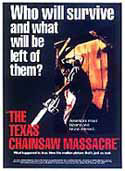 the
notorious, low-budget, backwoods cult horror film classic of the decade
- The Texas Chainsaw Massacre (1974) - a popular slasher film
by Tobe Hooper about a group of Texans that encountered a family of
cannibals, with Gunnar Hansen in the role of serial killer Leatherface;
this film was an indication of the increasing violence in films [the
film's title was immortalized in an early song by the Ramones, heard
on the radio during the film] the
notorious, low-budget, backwoods cult horror film classic of the decade
- The Texas Chainsaw Massacre (1974) - a popular slasher film
by Tobe Hooper about a group of Texans that encountered a family of
cannibals, with Gunnar Hansen in the role of serial killer Leatherface;
this film was an indication of the increasing violence in films [the
film's title was immortalized in an early song by the Ramones, heard
on the radio during the film]
- the socially-satirical portrait of a hedonistic Beverly
Hills hairdresser (Warren Beatty) in Shampoo (1975) who was romancing
three women (Lee Grant, Carrie Fisher, and Goldie Hawn) during the Nixon
election period
- The Sunshine Boys (1975) marked a film career
comeback for comedian George Burns (who came out of retirement and hadn't
been in a feature film since Honolulu (1939)) - the role gave
Burns a Best Supporting Actor Oscar and re-energized his career
- the madcap musical comedy The
Rocky Horror Picture Show (1975) was the story of
a stranded engaged couple (Brad and Janet - Barry Bostwick
and Susan Sarandon) who encounter mad scientist Dr. Frank N.
Furter (Tim Curry) and his "Time Warp" group of Transylvanians
- it would become a cultish audience phenomenon in midnight
shows after its first midnight showing in the spring of 1976
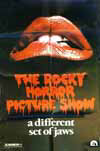 Stanley
Kubrick's Barry Lyndon (1975) based on a Thackeray novel, with
Ryan O'Neal in the lead role as an 18th century gambler Stanley
Kubrick's Barry Lyndon (1975) based on a Thackeray novel, with
Ryan O'Neal in the lead role as an 18th century gambler - the hyper-active stunts and fast car chases in Smokey
and the Bandit (1977)
- director Herbert Ross' romantic comedy The Goodbye
Girl (1977), with a script by Neil Simon, was an unexpected hit
and brought an Oscar to Richard Dreyfuss
- the first Muppet feature film aptly titled
The Muppet Movie (1979), one of the highest grossing live-action
children's films ever made, noted for its disparate collection of characters
such as Kermit (frog), Miss Piggy (pig), and Fozzie (bear)
- director Robert Benton's Best Picture-winning drama
Kramer vs. Kramer (1979) about a messy custody battle between
stars Dustin Hoffman and Meryl Streep for a child and the challenges
of single fatherhood
- stars Jane Fonda and Robert Redford paired again in
The Electric Horseman (1979)
- director Ted Ketcheff's North Dallas Forty (1979)
showcased the dark side of professional football, involving drug use
and alcohol, with stars Mac Davis (as a quarterback) and Nick Nolte
(as a wide-receiver)
- ...and former B-movie actor,
good-guy cowboy star and New Right champion in politics Ronald Reagan
would soon rise in Presidential politics and become the first
movie star ever elected President
Future star (and California governor) Arnold Schwarzenegger
made his screen debut in a minor film in 1970 and later starred in Pumping
Iron (1977), a documentary about professional body-building in preparation
for the Mr. Universe contest.
Film Critics on Television:
Chicago Sun-Times reviewer Roger Ebert and Chicago
Tribune critic Gene Siskel began to co-host and present their quarrelsome
film reviews on public television (Chicago's local PBS station WTTW) in
1978, with a series called Sneak Previews. The hugely successful
show, with "Thumbs Up" and "Thumbs Down" trademarked
ratings, was immediately syndicated nationwide. It soon became the highest-rated
series in the history of public broadcasting.
New Independent Studios:
In 1978, five disgruntled United Artists executives left
the studio over a disagreement about lack of control, and formed Orion
Pictures. (The group of executives were represented by
the five stars depicted in the constellation of Orion - the
new corporation's logo.) At the end of the decade in 1979,
brothers Harvey and Bob Weinstein, first finding success
as rock concert promoters in the early 70s while students
at the Univ. of Buffalo, became film distributors and formed
the independent studio Miramax (derived from the combination
of their parents' names: Miriam and Max), after purchasing
and renovating a run-down, second-run movie theater in Buffalo,
N.Y., and turning it into a profitable college art house.
The brothers launched Miramax in 1979 with its headquarters
in Tribeca.
The first hit film distributed by the newly-launched
studio was the British comedy The Secret Policeman's Other Ball (1982)
directed by John Cleese. Bought at the 1979 Cannes Film Festival, it was
a collection of footage from benefit rock concerts in London (with comedy
provided by the Monty Python Flying Circus troupe) to support the human
rights organization Amnesty International. The film, including Rowan "Mr.
Bean" Atkinson’s hilarious headmaster skit, Billy Connelly singing
country music, and Pete Townshend's acoustic versions of "Pinball
Wizard" and "Won't Get Fooled Again," grossed $6 million.
[Note: Since 1993, Miramax (and Dimension, one
of its subsidiaries to produce and distribute innovative genre films,
that was headed by Bob Weinstein) had become a part of the Walt Disney
Company. And Orion was sold to MGM in 1997.]
Looking Ahead:
Many reviewers and historians have concluded that the
70s was a very complex, pluralistic and unique era in film-making,
due to its many socially-conscious themed films, lots of conflicting
viewpoints and visions about America from distinctive auteur-directors,
and the questioning of norms and what had come before. A new era was
dawning that would emphasize the marketing, advertising and budgeting
of films, the search for blockbusters, the dominance of the powerful
studios over independent film-makers, and the prominence of "high concept"
- the idea that a film should be able to be pitched with a succinctly
stated premise. This idea took hold most clearly in the 70s with the
novel approach taken by Jaws
(1975) - with
its visual-ad poster (a shark poised to attack swimmers above
with the tagline: "Don't go in the water!").
The premise of 'high-concept'
was to easily convey the film's main premise (with the broadest appeal
possible) so that it could be easily sold to the marketplace. However,
many films in the 1970s couldn't easily be reduced to one sentence
or image, since it was difficult to compress rich character development,
cinematography, acting, or other artistic qualities of a film into
a short phrase. Trends would be changing with the rise of test-marketing,
expensive ad campaigns, more bottom-line predictability, and the massive
release of first-run films nationwide - accompanied by concentrated
TV and print ads.
By the early 1980s, the 60's era of music, free love,
youthful idealism, and friendship that had extended into the 70s was
clearly over. By now, the hippies (a baby boomer generation) of the
60s had become a new crop of angst-ridden,
suburban-dwelling yuppies. They could only nostalgically look back
to the 60s and ask what had happened to their lives. Audiences clearly
identified with and revered films such as
The Big Chill (1983), by writer/director Lawrence Kasdan. It
featured a catchy Motown soundtrack of hit songs (by The Temptations,
Aretha Franklin, Marvin Gaye, and Smokey Robinson and the Miracles)
celebrated by successful, upwardly-mobile, thirty-something college
grads from their days 15 years earlier at the University of Michigan,
who gathered together for a weekend funeral-reunion in a summer vacation
house in South Carolina. The many stars of the ensemble film - Jeff
Goldblum, Kevin Kline, Tom Berenger, Glenn Close, Mary Kay Place, Jo-Beth
Williams, Meg Tilly and William Hurt reflected upon the good ol' days
(and the promise of what might have been but hadn't materialized),
smoked dope, cooked together and paired up for sex in unpredictable
ways. The film's two taglines were highly appropriate: "In a cold world
you need your friends to keep you warm," and "How much love, sex,
fun and friendship can a person take?"
 Film History of the 1970s
Film History of the 1970s
Part 1, Part 2, Part 3, Part 4, Part 5, Part 6

 
|
